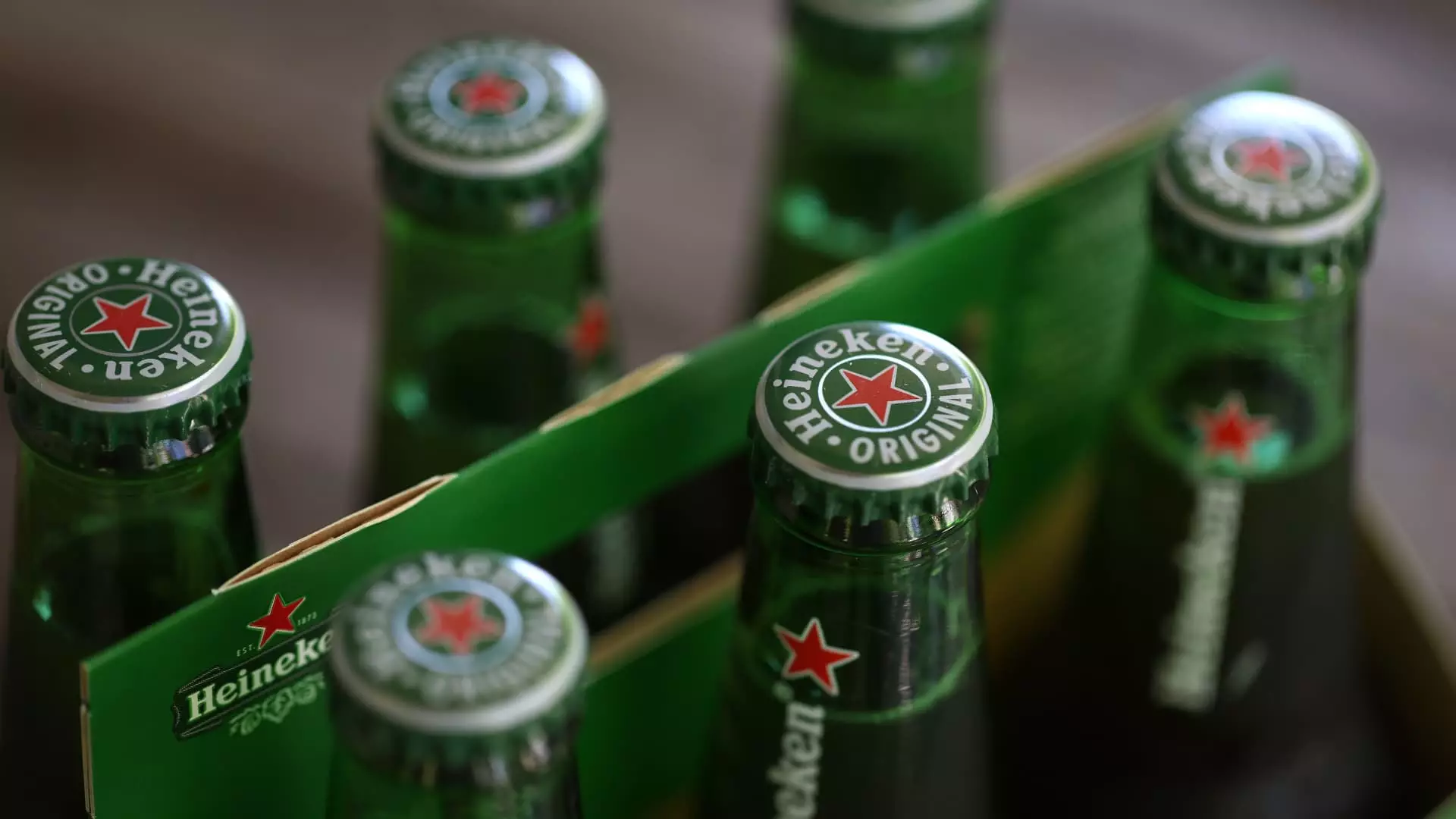Heineken’s shares suffered a significant blow as they opened nearly 7% lower due to disappointing first-half profit growth. The company’s stock plummeted by 7.9% during trading hours in London, causing concern among investors. Operating profit, which was anticipated to show organic growth of 12.5%, fell short of expectations at 13.2%. Beer sales, estimated to grow by 3.4%, only rose by 2.1%. This unexpected downturn in performance left many questioning Heineken’s future prospects in the market.
The brewing giant reported a net loss of 95 million euros ($103 million), attributed mainly to a non-cash impairment of 874 million euros on its investment in Chinese brewing firm CR Beer. Heineken explained that this write-down was a result of the declining share price of CR Beer amidst concerns about consumer demand in China. Despite maintaining that the operational performance of CR Beer was not subpar, the financial hit was substantial. This loss raised doubts about the company’s investment strategies and risk management moving forward.
In response to the disappointing results, Heineken revised its operating profit organic growth forecast for the year to a range between 4% to 8%, lower than the previous guidance of low to high single-digit growth. Analysts expressed skepticism about the company’s ability to meet these revised targets, given the underperformance in the first half. Market reaction to the news was somber, with shares falling and concerns rising about Heineken’s competitive position in the industry.
Leadership Challenges and Opportunities
One major area of concern highlighted by analysts was Heineken’s performance in Europe, where profit growth was a meager 0.2% compared to an expected 15.1%. This discrepancy was largely attributed to increased promotional spending in a fiercely competitive market. Despite this setback, Heineken maintained its leadership in low and no-alcohol beer sales, with Heineken 0.0, a no-alcohol beer, showing a notable 14% increase. The company’s focus on this category is driven by market trends indicating a growing demand for low and non-alcoholic beverages, presenting both challenges and opportunities for established brands like Heineken.
Cost Pressures and Revenue Strategies
In an effort to address cost pressures, Heineken reported a significant reduction in input costs in Europe and the Americas, allowing for more favorable pricing strategies. The company emphasized the importance of striking a balance between volume and pricing growth to sustain revenue growth in the long term. By adapting to changing market conditions and consumer preferences, Heineken aims to position itself as a leading player in the global beer industry.
Overall, Heineken’s recent financial performance reflects a mix of challenges and opportunities facing the company in a rapidly evolving market. While setbacks in profit growth and investments raise concerns about its future trajectory, Heineken’s focus on innovation and strategic positioning in key growth segments signal resilience and adaptability in the face of adversity. Investors and analysts will be closely monitoring the company’s next moves to assess its ability to navigate uncertainties and deliver sustainable growth in the long run.


Leave a Reply